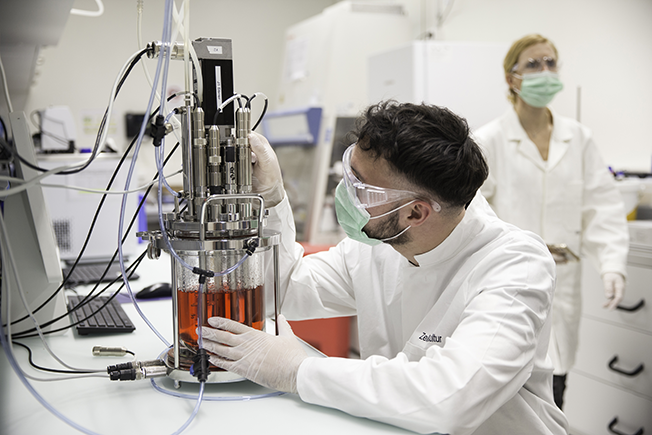

Bridging alternative protein investment gaps
Following recent headwinds, a nascent industry prepares to rise again, writes Gautam Godhwani, Managing Director of Good Startup

The alternative proteins industry started on a strong footing. With US$5 billion of funding in 2021 and US$14.2 billion to date, it managed to pique investors’ interest that bought into the idea that there is a bright future ahead for the industry. However, the funding juggernaut hit a roadblock in 2022, due to challenging macroeconomic conditions.
The downward trend accelerated in Q3 of 2022, which saw a paltry US$420 million in funding for the sector, plummeting 51% from Q2 2022. This fall eclipsed even the decline in total venture funding (34%) during the same period. Inflation, the Russia-Ukraine war, supply chain hiccups and the pandemic were also contributors. A clear sign of the hardships being endured by the industry is apparent in the performance of its twin flagships in the public markets – Beyond Meat and Oatly. Following their IPOs in 2019 and 2021, respectively, these companies enjoyed a market capitalization of approximately 30 times the sales. Recent stock prices have taken a major hit with their market capitalization plummeting to just twice the sales. Indeed, this has left industry observers questioning the long-term viability of alternative proteins.
Despite these headwinds, the industry seems poised for better times ahead. It continues to innovate at a rapid pace with new technologies and products pushing boundaries across quality, price and variety. The recent valuation corrections provide an attractive entry point to investors who are sitting on record amounts of dry powder. Rounds are taking longer to close, providing opportunity to conduct deeper diligence. The economy may have slowed down, but innovation certainly hasn’t. As a result, there remain significant opportunities for investment. Investors that leverage these opportunities now have a potential to see outsized returns as these companies emerge from the economic downturn ready for the next economic boom. Let’s take a closer look at the compelling investment opportunities that exist in the sector even during these challenging times.
Opportunity #1: Supply chain
Similar to the development in any new industry, the first movers in the alternative proteins sector were vertically integrated companies, doing everything in-house. As a result, the early flow of capital in the industry did not address the anaemic supply chain, which is essential to accelerate product timelines, improve product quality, and ensure ubiquitous availability at distribution points. To date, 82% of the funding has gone to B2C companies, with B2B companies garnering just 18%. It is important to recognize that there are three separate technology stacks – plant-based, fermentation, and cultivated – each with its own supply chain that will require individual investment and focus to develop. We must start investing in a solid foundation to develop the next generation of products.
Opportunity #2: Infrastructure and capacity
Currently, just 3.3% of the funding has gone toward equipment and infrastructure in the industry. A recent report by the Good Food Institute (GFI) indicated that, by 2030, to achieve just 6% market share for plant-based meat, the industry will need US$27 billion in capital expenditures, with an additional US$17 billion required for annual operating costs. Fermentation faces significant hurdles as well. Of the 61 million liters of global capacity in fermentation-focused Contract Manufacturing Organizations (CMOs), only two million liters are available with the downstream processing capabilities required for food applications.
.jpg)
Cultivated meat fares no better. Much of the capacity for the segment resides in the biopharma sector, which focuses on premium-priced products at low volumes. Food products have an inverse economic relationship – they must be produced at high volumes and low prices. This will require not only extra capacity but a fundamentally new approach to make the economics work. Startups cannot overcome this challenge on their own. They will require participation from all ecosystem players – incumbents, governments and investors – to shoulder the responsibility of building this infrastructure.
Opportunity #3: New markets
Our food system is not equipped to feed the 9.7 billion population projected by 2050. Population growth in Asia along with rising affluence will mean a substantially larger middle-income group. Based on Bennett’s Law, increasing affluence is tied to higher meat consumption. Thus, Asia will be a standout for sector growth. The first generation of products were developed largely for western tastes. As we move into the next phase of alternative protein development, there is an opportunity to reach consumers in new markets who will demand products made for local tastes and at price points they are accustomed to for conventional products. Already, India is the largest consumer and producer of milk, China consumes half the world’s pork and Asia consumes 60% of the world’s seafood. New products will emerge to serve these markets, catering to local tastes at prices consumers can afford. For cultivated meat, governments will need to follow the lead of markets such as Singapore to ensure regulatory pathways are available for these products.

Opportunity #4: Hybrid and novel products
Currently, plant-based alternatives dominate the market with 45% of the funding to date. Fermentation companies garnered 39% while cultivated products stand at 16% of funding. Hybrid products have the potential to take the best of each technology and combine it into a single product. One can envision a product, for example, where plants bring the nutrition, fermentation brings precision proteins, and cultivated technology brings taste and texture. These ‘hybrid’ products may be the solution to great-tasting products that are better for the consumers and the planet. Hybrid products are especially interesting to bridge the gap to reach the mainstream consumer for whom the current product set doesn’t offer the taste, price or health benefits.
They may also be the answer to improving the taste and texture of plant-based products, creating a larger market for precision fermentation, and lowering the price for cultivated meat products to enter the market. Over time, startups will invariably fuse these products together to create a new set of offerings that no longer resemble conventional alternatives. This new set of ‘novel’ products will help unlock new markets.
Lending a helping hand
Incumbents in the food industry will play an important role. Established food manufacturers have talent, infrastructure, distribution, and profits to deploy into new markets. Accordingly, these companies are especially well suited to bring alternative proteins to market and educate mainstream consumers. This, in turn, offers them the potential to increase their revenues. Furthermore, workers in these companies will invariably venture out over time and start new companies of their own that will define the next generation of technologies and products.
Governments can also be a key enabler via three pathways – research, regulation, and talent. The industry is in dire need for increased funding to ensure fundamental research continues to foster innovation in the sector.
Although the private sector may contribute to this area for profit-driven reasons, governments must contribute toward research with long-term objectives in areas that are yet unripe for private sector funding. In addition, the regulatory pathway is no less important, particularly for cultivated technology companies. Both safety and labeling require attention, especially in the face of an aggressive incumbent lobby. Finally, it will take time for indigenous talent to grow. Therefore, we must address the talent shortage with help of other industries such as biotech and pharma. Training and resource-sharing opportunities driven by governments can act as a stimulus when attracting talent.
The industry is in dire need for increased funding to ensure fundamental research continues to foster innovation in the sector
The industry has made commendable progress in a short period of time, yet the path ahead is arduous and uncertain. After years of uninterrupted growth and progress, 2022 has been the most challenging year the industry has faced. As a result, support from industry stakeholders is especially crucial at this time. It is often during challenging times that we see stakeholders make necessary adjustments to prepare for the next chapter. The alternative proteins industry is no different.
For more information about Good Startup, please click here
If you have any questions or would like to get in touch with us, please email info@futureofproteinproduction.com


%20ILVO%202.jpg)

.png)

